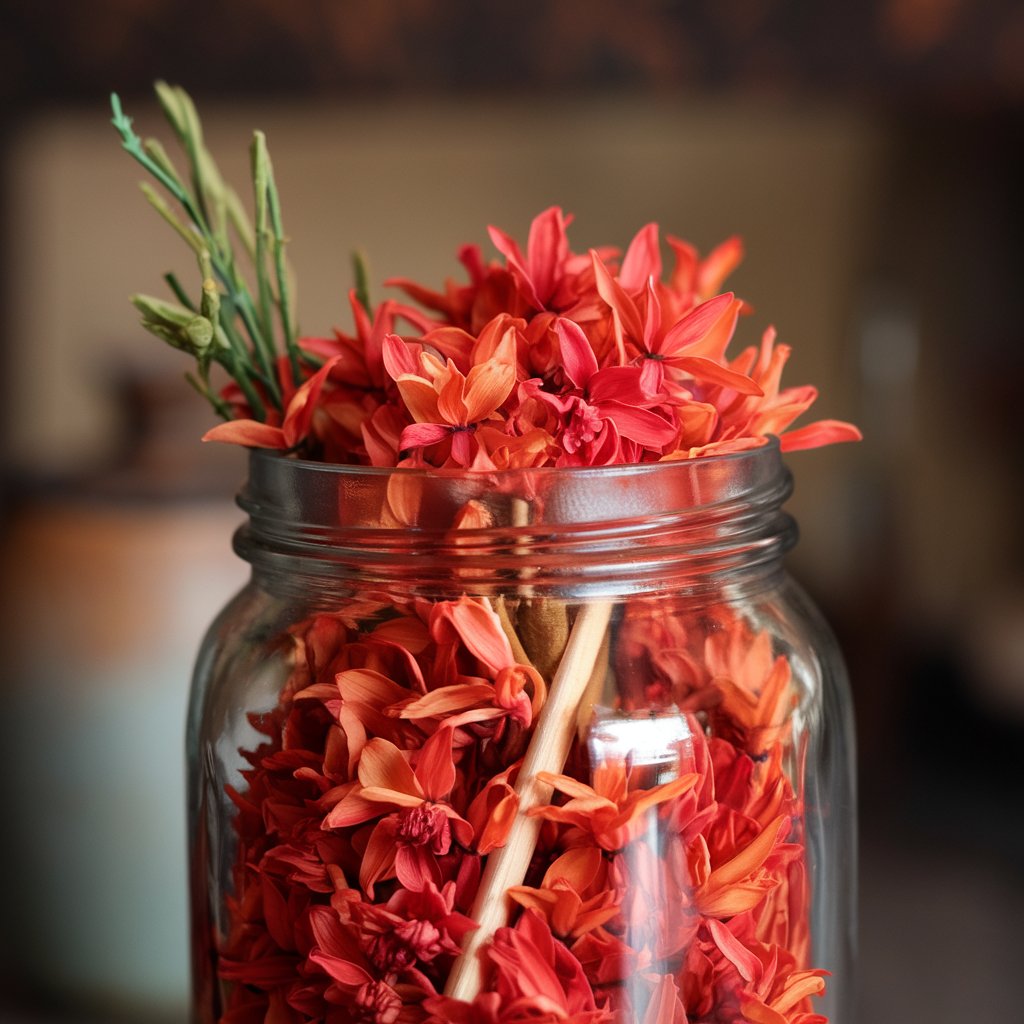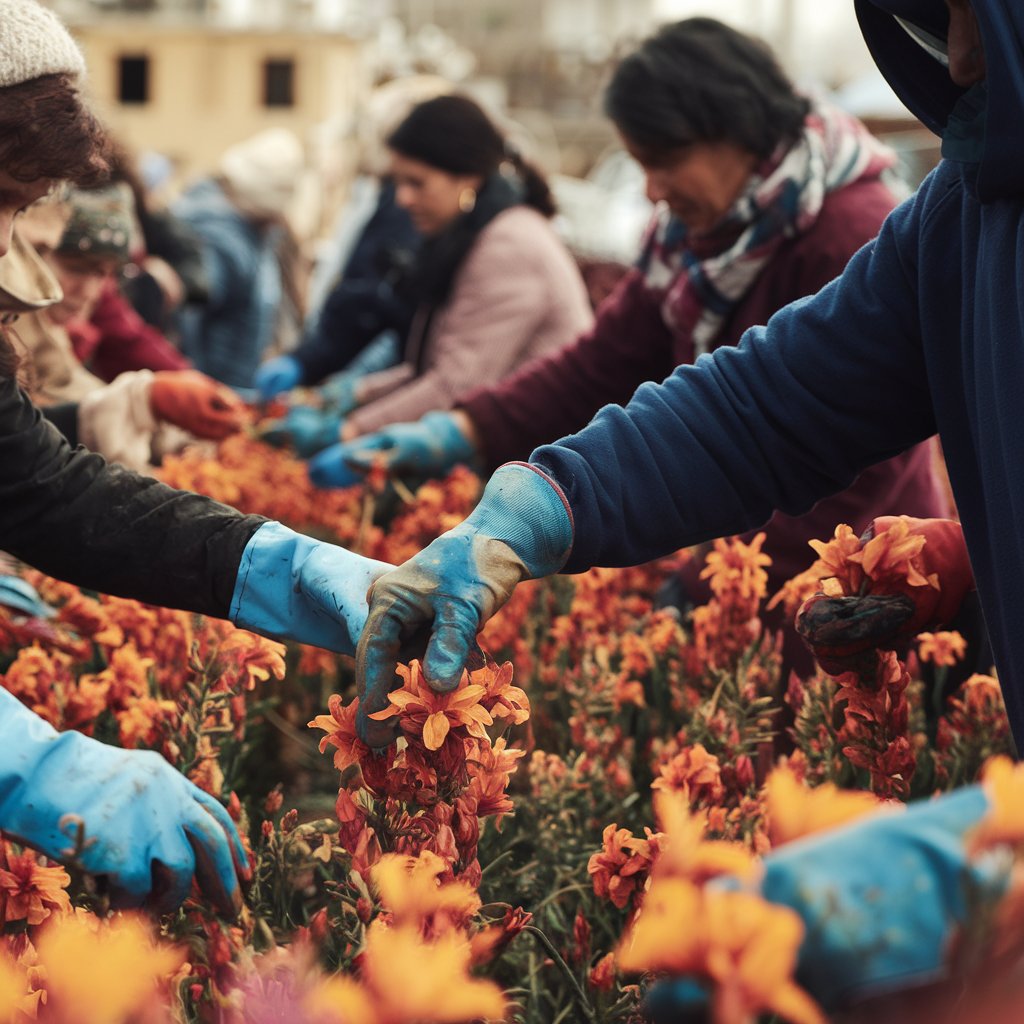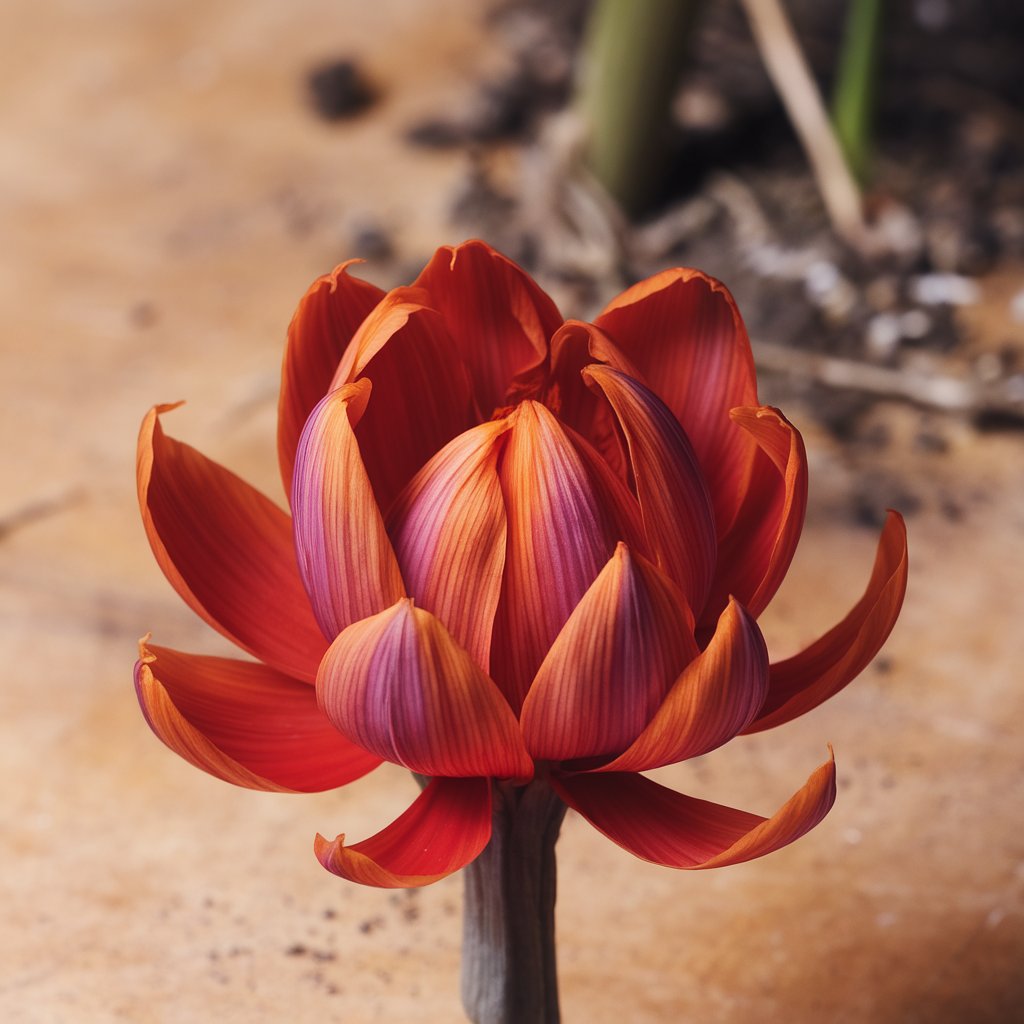Discover the incredible world of the saffron flower, one of nature’s most prized blooms known for its striking color, rich flavor, and health benefits. Learn the difference between saffron and the saffron flower, the uses of saffron in cooking, skincare, and traditional medicine, and why it’s called “red gold.” With only three threads produced per flower, the saffron flower is rare and delicate, requiring thousands of blooms to yield just a small amount of saffron spice.
Table of Contents
What is the Difference Between Saffron and the Saffron Flower?
Understanding the distinction between saffron and the saffron flower helps appreciate why saffron is so valuable. Saffron refers specifically to the red stigmas (threads) inside the Crocus sativus flower. Each flower produces only three of these delicate threads, which are carefully harvested and dried to create the spice we know as saffron.
On the other hand, the saffron flower includes the entire purple bloom that produces these threads. While the spice itself is used in cooking and health remedies, the flower’s petals and pollen can also be used, though they’re less common. The flower is beautiful and highly prized, but it’s the threads inside that give saffron its high market value and make it one of the world’s most expensive spices.

What is the Saffron Flower Good For?
The saffron flower, beyond providing the spice, has numerous applications. Saffron itself is packed with antioxidants, which help reduce inflammation and combat free radicals in the body. Traditional medicine systems, including Ayurveda and Persian medicine, have used saffron for centuries to support digestion, improve mood, and even promote heart health.
Recent studies suggest that saffron may benefit mental health by acting as a natural mood enhancer. Its potential in reducing symptoms of mild depression and anxiety makes it a powerful tool for emotional wellness. Saffron may also aid in reducing menstrual pain, improving skin tone, and supporting eye health.
Is the Saffron Flower Good for Skin?
Yes, the saffron flower offers great benefits for skin health, particularly through the antioxidant properties of saffron itself. The flower’s extracts are commonly used in skincare products due to their ability to brighten the skin, reduce pigmentation, and improve overall complexion. Saffron helps reduce dark spots and adds a natural glow, making it a popular choice for those looking to achieve radiant, clear skin.
In addition to skincare products, saffron-infused water or oils can be applied directly to the skin as part of a natural beauty regimen. Thanks to its anti-inflammatory properties, saffron can soothe irritation and redness, making it suitable for those with sensitive skin as well.
How Do You Eat Saffron Flowers?
Eating saffron flowers is less common than consuming the threads, but they can indeed be used in culinary creations. The petals themselves are edible, and while they have a milder flavor compared to the threads, they can add a subtle floral note to dishes. Petals can be sprinkled over salads for a touch of color and mild flavor or used as garnishes for desserts and drinks.
However, the real flavor and benefits are in the saffron threads. To bring out their full essence, steep the threads in warm water or milk for about 10-15 minutes. This process releases the vibrant color and flavor, which can then be added to dishes like rice, soups, or sauces. Saffron can also be used in teas or blended into smoothies for an extra antioxidant boost.
How is the Saffron Flower Used?
The saffron flower is used in a variety of ways, primarily for its threads, which are dried and used as a spice. Here are some popular uses of the saffron flower:
- Culinary Use: The threads are steeped in warm water or broth to release their flavor and color, then added to dishes such as risottos, paellas, and desserts.
- Tea and Beverages: Saffron is often steeped to make tea, which is thought to help with digestion, mood, and overall relaxation.
- Skincare: The petals and saffron extracts are used in creams, face masks, and oils for their skin-enhancing benefits.
- Medicinal Purposes: Traditionally, saffron has been used to help with conditions like digestive issues, menstrual pain, and even insomnia.
Given its extensive range of applications, the saffron flower truly stands out as a multipurpose marvel.
If you’re interested in other natural options for health, you might also like this article on 10 Reasons Why the Best Olive Oil is the Healthiest Choice You Can Make.
How Many Saffron Threads Come from One Flower?
Each saffron flower produces only three threads or stigmas, which are carefully harvested by hand. This low yield is part of the reason why saffron is so expensive; it requires many flowers to produce even a small quantity of saffron.

How Many Flowers Are Needed to Make 1 kg of Saffron?
Producing one kilogram of saffron requires an estimated 150,000 to 200,000 saffron flowers. This intense labor process involves planting, harvesting, and processing an enormous quantity of flowers. During harvest season, which typically lasts only a few weeks each year, workers gather each flower by hand at dawn to preserve its freshness.
After harvest, the delicate threads are dried, reducing their weight even further. This high level of care and effort in producing saffron contributes to its high cost, as well as its reputation as one of the most luxurious spices in the world.
Are Saffron Flowers Rare?
Yes, saffron flowers are relatively rare and require very specific growing conditions. They thrive in regions with hot, dry summers and cool winters, which is why they are primarily cultivated in places like Iran, Kashmir, Greece, and Spain. The plant’s sensitivity to climate and soil conditions, combined with the meticulous harvesting process, makes saffron flowers difficult to grow in many parts of the world.
In addition to the environmental requirements, saffron flowers have a short bloom period, often just one to two weeks each year. This rarity contributes to the spice’s exclusivity and high price.
How Long Do Saffron Flowers Last?
Saffron flowers have a very brief blooming period and must be harvested quickly. Once picked, the fresh flowers don’t last long, typically remaining fresh for only a day or two. This short lifespan means the harvesting process must be efficient and timely to capture the full quality of the saffron threads.
After harvesting, the saffron threads themselves can last much longer if stored properly. Dried saffron can maintain its potency for up to two years if kept in a cool, dark place in an airtight container.
Conclusion
The saffron flower is as unique as it is beautiful. From its vivid color to its unmistakable aroma, saffron has an esteemed place in kitchens, medicine cabinets, and skincare routines around the world. However, its high price is justified by the intensive labor required to cultivate, harvest, and process each delicate thread.
Whether you’re looking to brighten up a recipe, enjoy its therapeutic benefits, or explore its potential in skincare, saffron offers a multitude of uses. It’s a true gem in the world of natural products, making every tiny thread worth its weight in gold.
Frequently Asked Questions (FAQs)
1. How can I store saffron to keep it fresh?
Store saffron in an airtight container, away from light and moisture, to preserve its quality and potency.
2. Can saffron be grown at home?
It’s possible to grow saffron at home, but it requires very specific climate and soil conditions, making it challenging for most gardeners.
3. Does saffron expire?
Saffron does not spoil, but it can lose its flavor and aroma over time. For best results, use it within two years of purchase.
4. How do I know if saffron is pure?
Pure saffron has a strong aroma, a deep red color, and a slightly bitter taste. Be wary of saffron that appears too bright or smells artificial.
5. What’s the best way to use saffron in cooking?
To get the most out of saffron, steep a few threads in warm water before adding it to your dish, allowing the full color and flavor to be released.

